Nikola Tesla is now an icon of popular culture, a symbol of the brilliant and eccentric scientist, the inventor ahead of his time and misunderstood. Books and documentaries tell the fascinating story of Tesla’s life and he also appears as a fictional character in films and comics. His mythic stature has been reinforced, the superhero of science facing down the villain Edison. However, are all the inventions attributed to him actually real? We review his greatest personal achievements, his contributions to collective breakthroughs and his ambitious ideas that he never managed to implement.
1. Tesla Coil
In 1891, at the age of 35, Nikola Tesla registered the mother of all his more than 300 patents, known today as the ‘Tesla Coil’, an electrical transformer composed of several coupled resonant circuits. The inventor himself used different variants of this coil as the basis for a multitude of subsequent experiments, in which he studied the phenomena of phosphorescence or X-rays, and explored new possibilities for electric lighting and the wireless transmission of power.
Although Tesla coils came to be used commercially in the first generations of radiotelegraphs, today their use is limited to entertainment. They are very common devices in science museums as they generate spectacular sparks and electrical discharges, and they have even been adapted to function as musical instruments. Their secret lies in the production of alternating current that is high voltage, high frequency and low intensity: understanding a Tesla coil provides fundamental clues about how electricity works.
2. Magnifying Transmitter
«… I feel certain that of all my inventions, the Magnifying Transmitter will prove most important and valuable to future generations,» said Nikola Tesla in his autobiography. Not surprisingly, he designed this advanced version of the Tesla coil to conduct experiments in search of his dream – dispensing with wires for telecommunications and the transmission of electricity.
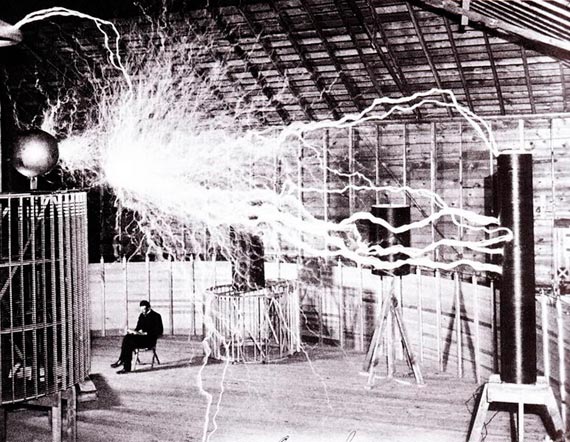
In 1899, Tesla built in his laboratory in Colorado Springs (where he had moved from New York) an amplifier transmitter 15 metres in diameter, capable of producing extremely high voltage currents (up to 4 million volts) and bolts of electricity up to 40 meters long. In these facilities Tesla used the $100,000 that an investor had given him for another purpose, to develop a new public lighting system. After nine months of experiments, Tesla believed he had succeeded in transmitting electricity without wires and taking the next step toward his wireless dream.
3. World Wireless System
Encouraged by the results of his experiments in Colorado Springs, Tesla returned to New York and in late 1900 he convinced the banker JP Morgan to finance the construction of a wireless telecommunications station (the Wardenclyffe Tower) in order to transmit messages across the Atlantic Ocean before his rival Guglielmo Marconi.
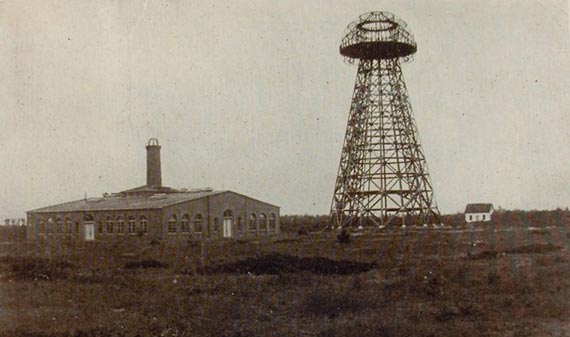
Marconi was trying to accomplish it with a radiotelegraph. Tesla wanted to do it with new technology and his ambition led him to upgrade his project to include the idea of wireless transmission of electricity. But Morgan did not want to provide the necessary extra funding and the Wardenclyffe Tower was abandoned in 1906, never having come into operation.
Tesla aspired to bring electricity and communications anywhere in the world, with a network of some 30 wireless stations that would use the Earth itself and its atmosphere to conduct electricity via a new kind of stationary waves discovered by himself. For decades, he never tired of arguing that his system was superior to that of radio waves, but the truth is that never he demonstrated having transmitted wireless electricity further than a few meters away.
4. More efficient machines
To celebrate his 50th birthday, in 1906 Tesla made a demonstration of a bladeless turbine designed to compete in efficiency with piston engines. In 1913 he patented the invention (which he never developed commercially) with the desire to apply it to geothermal energy.
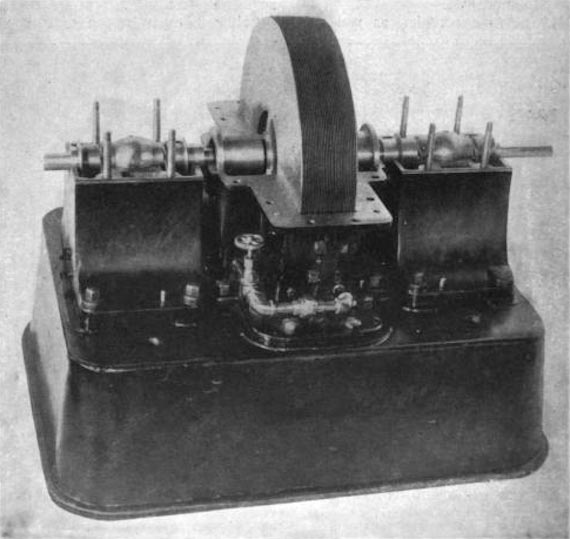
Years earlier he had patented an electric generator, the Tesla oscillator, to replace the inefficient steam engines that were then being used to produce electricity. But his invention was surpassed in efficiency by modern steam turbines. Experimenting with a small version of his oscillator, Tesla claimed to have reached the resonance frequency of his building, causing his neighbours to call the police, alarmed by the shaking and tremors. Another version of the story has the writer Mark Twain (a friend of Tesla) experiencing a laxative effect due to the vibration of the oscillator. And at his 79th birthday party, Tesla told reporters that his oscillator could topple the Empire State or split the Earth’s crust in two. It is popularly known as the ‘Tesla’s earthquake machine’, although in 2006 a modern version of the oscillator failed to produce large vibrations when it was tested on the TV show “Mythbusters”.
5. Electrical education
Convinced of the benefits of alternating current, Tesla even developed his own version of brain-training, theorizing that the application of electricity to the brain would stimulate intelligence, «in the same way it stimulates plant growth.» In 1912, Popular Electricity Magazine published his plan to implement a kind of molecular massage for students by means of high frequency electric currents, to facilitate learning and even «turn dull students into bright ones, saturating the classrooms with infinitesimal electrical waves.»
The project in which Tesla intended to improve the education and health of students consisted in carefully wiring the walls of the classroom, without pupils being able to realize. The then superintendent of New York schools, William H. Maxwell, initially gave his approval to Tesla’s plan, although the experiment was never carried out.
6. Neon Lights
Another of the great inventions attributed to him are neon lights, which according to numerous references Tesla demonstrated at the Universal Exhibition of Chicago (1893). However, neon gas was not discovered until 1898 and the first neon lamp was presented by the Frenchman Georges Claude at the Paris Motor Show in 1910.
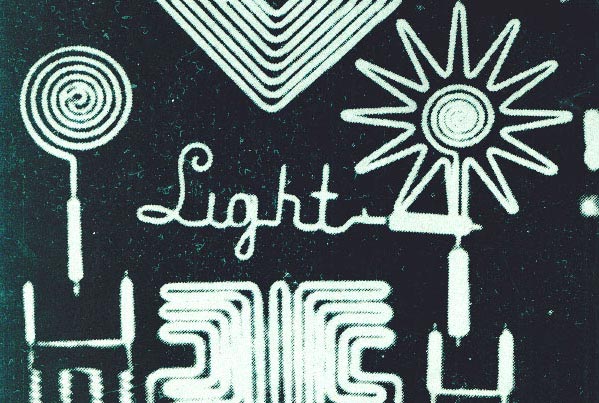
Nikola Tesla was a pioneer in the development of gas discharge lamps, and he was certainly one of the first who applied the invention to creating light signs, by bending the tubes that contained the gases. Nevertheless, the lights that Tesla demonstrated in 1893 were neither commercially viable nor were they neon.
7. X-rays
Experimenting with discharge tubes, in 1894 Tesla realized that an «invisible radiation» appeared from one of them that damaged photographic plates stored nearby. He continued to investigate this line but his notes, his instruments and his efforts were lost in a fire in his laboratory in March 1895. Later that same year, the German Wilhelm Röntgen announced that he had discovered X-rays, working with a Crookes tube similar to that used by Tesla.
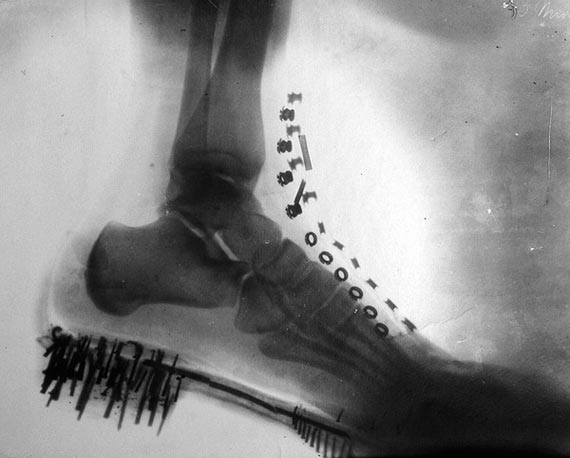
Following Röntgen’s announcement, Tesla easily designed his own X-ray system. He had his famous coils to be able to apply to the tube the high voltage discharges needed to generate the new radiation. He also obtained some of the first images of the human body with X-rays, which he called ‘shadowgraphs’. Röntgen himself, the inventor of radiographs, was impressed by the quality and level of detail of Tesla’s images.
Tesla never discussed the discovery of the German, and had it not been for that unfortunate fire, he could have been credited with the discovery of X-rays and won Röntgen’s Nobel in 1901. The truth is that Tesla was a pioneer who made important contributions to the development of X-rays.
8. Induction motor
In May 1888 Nikola Tesla published a scientific paper detailing the operation of his greatest success as an inventor: the alternating current induction motor, with great advantages over direct current electric motors. Its operating principle was to generate movement in the engine by rotating magnetic fields produced by a polyphase alternating current.

Two months earlier, the Italian Galileo Ferraris had presented his own induction motor, independently arriving at the same innovative technology. The magnate George Westinghouse, who was developing the commercial application of alternating current, was interested in both designs and finally decided that Tesla’s patent had more possibilities. Westinghouse chose his induction motor to compete with General Electric and Thomas Edison in the so-called ‘war of the currents’. This is why Tesla is usually cited as the inventor of the induction motor, though he must share that honor with Ferraris — and that’s very common in the history of science, since breakthroughs such as the theory of evolution, the periodic table or the telephone were developed independently and almost simultaneously, by different people, who were supported by the earlier ideas of other researchers.
9. Radio
The idea that Tesla was ‘the true inventor of radio’ is widespread. However, radio communication is one of those collective achievements, developed upon many scientists and engineers’ contributions. From those who experimentally discovered the relationship between electricity and magnetism (Ørsted, Ampère, Henry and Faraday), to the scientist who unified both phenomena with his theory of electromagnetism (Maxwell), or the physicist who achieved the first transmission of electromagnetic waves (Hertz, in 1887).

It was based on those radio waves (also called Hertzian waves) that in 1896 Guglielmo Marconi designed the first wireless telegraph that was able to transmit signals over long distances, from one point to another located several kilometers away. Marconi is considered the inventor of the radio for that achievement and for having carried out, in 1901, the first radiotelegraph communication across the Atlantic (between England and Canada). Tesla was competing against Marconi for achieving that scientific goal, but his system didn’t use radio waves. In fact, Tesla doubted that radio waves really existed and, in any case, he thought that if they did exist they could only travel in straight lines, being useless for long distance communication. Thus Tesla was not even close to inventing the radio, even though Marconi used in his radiotelegraph some electrical components patented by Tesla.
10. Remote Control
The great inventions of Tesla made the arrival of electricity in households possible. His contributions to alternating current (induction motor, transformer and polyphase system) were essential for Westinghouse to be able to impose this AC power technology. Together, inventor and entrepreneur, they managed something extraordinary in 1896: to generate electricity in Niagara Falls (USA) and bring it to homes in the nearby city of Buffalo. From then on, cities were quickly filled with electrical cables. However, the next step, Tesla’s wireless dream, remained just that, a dream.

Tesla did not make any significant contributions to wireless technology. In spite of all his talent, it was impossible to do so without an understanding of the scientific basis of this phenomenon, and Tesla did not accept the new principles of physics explaining the transmission of electrical impulses through the air. Even so, without believing in electromagnetic waves, Tesla did design a curious application of them: the first remote control system via radio. He used it, in 1898 to wirelessly steer a small boat in an electric fair, to the amazement of an audience divided between those who believed that Tesla had telekinetic powers to those who looked for a trick inside the boat. His little invention was the forerunner of drones and TV remote control.
Comments on this publication